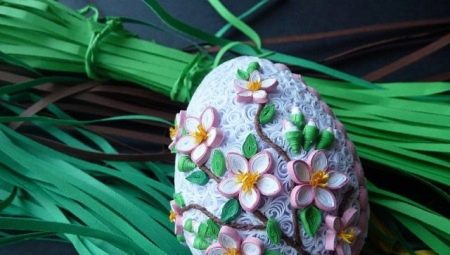Traditionally, for the holiday of Easter, it is customary to bake Easter cakes, paint eggs and give them to relatives, friends and acquaintances. For home decoration or as a gift you can make a decorative gift with your own hands. Such a gift is not only a symbol of the holiday - it is a small work of art. Openwork crafts in the technique of quilling will not leave anyone indifferent and will appeal to both adults and children.
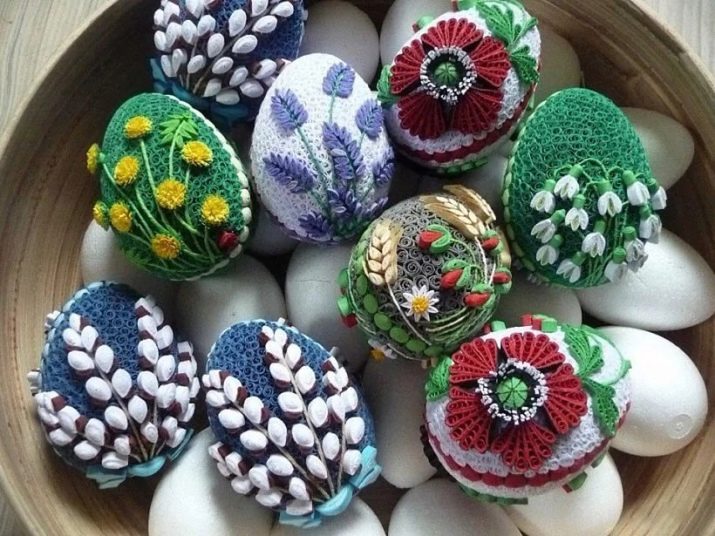
What is required?
To design and manufacture, prepare:
PVA glue or any other;
a brush;
tweezers;
toothpicks, you can stick from a ballpoint pen (an incision is made from one edge) or a special tool;
double-sided colored paper, office paper, parchment, quilling kit;
scissors or clerical blade;
ruler, stencil with holes;
sewing pins or button studs;
the base in the form of an egg (foam, plastic from toy surprises, the usual large boiled or shell from it);
cling film or ordinary plastic bag.
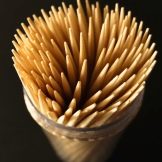
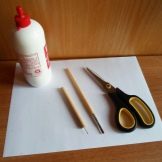
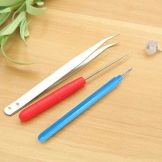
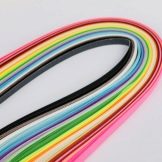
Easy to find on sale sets to work in such a technique and special tools. Strips for paper rolls, you can make it yourself; experienced craftsmen prefer this method. As a material, thin flexible sheets are suitable. The marking is applied with a pencil on a ruler, cut with scissors or on a prepared surface with a blade.
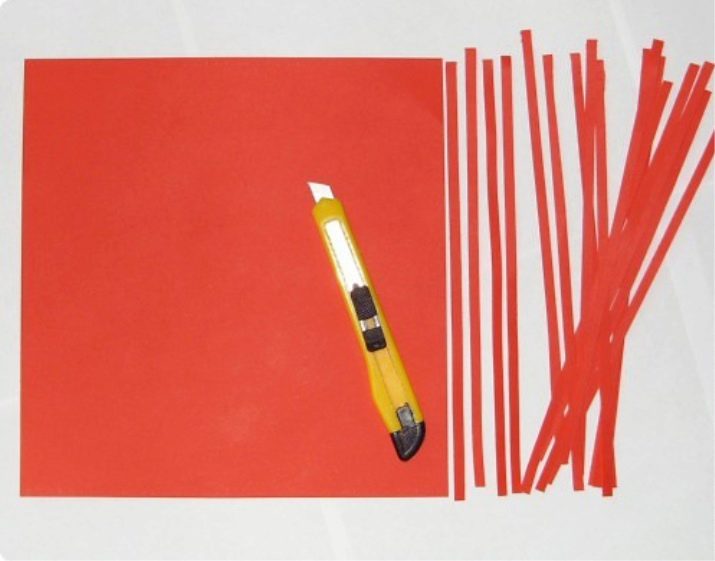
The width of the ribbons can be from 0.2 to 1 cm, the length also varies from 14 to 60 cm - it depends on the type and size of the decor. The winding density can also be different.
How to do it yourself?
A master class in making a regular Easter egg. Required plastic egg of two halves. Separate the top from the bottom.Take a film or polyethylene and wrap each half so that there are no bubbles. Next, we need bright yellow paper sliced 30 cm long, 0.5 wide. We take a toothpick or an awl, if a toothpick - we split the tip, we put a paper ribbon into it and wind it so that the coils fit snugly against each other. We fix the tip with glue. You need such tight rings 120 pieces or a little more.
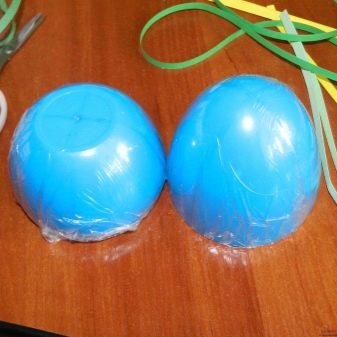
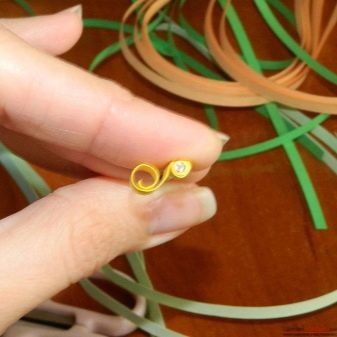
We begin to glue on top, fixing with buttons or tailor pins, threading through the hole in the middle. Apply glue gently to the joints of the rings so that they stick together. Paste on top and then bottom. Convenient to use tweezers. You can try to combine 2-3 colors. If you twist coils of different sizes, you get a kind of texture. The glue is allowed to dry. From each half, carefully remove the form with the film by removing the buttons. The two parts are glued together with elastic or thread, until the glue dries. Go to stand. Strips 5 mm thick, 60 cm long (consists of two pieces 30 + 30). You can use different colors. We twist the coils, collect in the form of a flower. Glue on a film or file. Glue to the base.
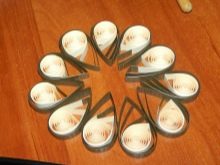
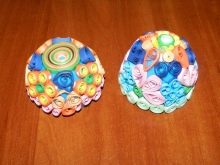
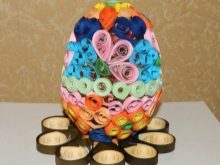
You can stick any pattern on top of such an egg, for example, a flower or a rabbit.
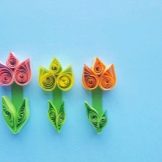
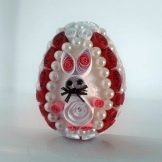
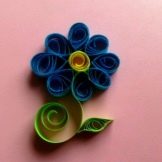
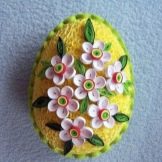
A little harder to make product with a pattern. The ornament is thought out in advance. For this, on the basis of a felt-tip pen, it is necessary to mark a place for each object. They start with large fragments, then fill the gaps with solid circles.
Openwork egg
The gift decorated in lace style. Our master class will tell you where to start and how to act. We advise you to proceed with the implementation, if you are already well versed in creating simple souvenirs for Easter.
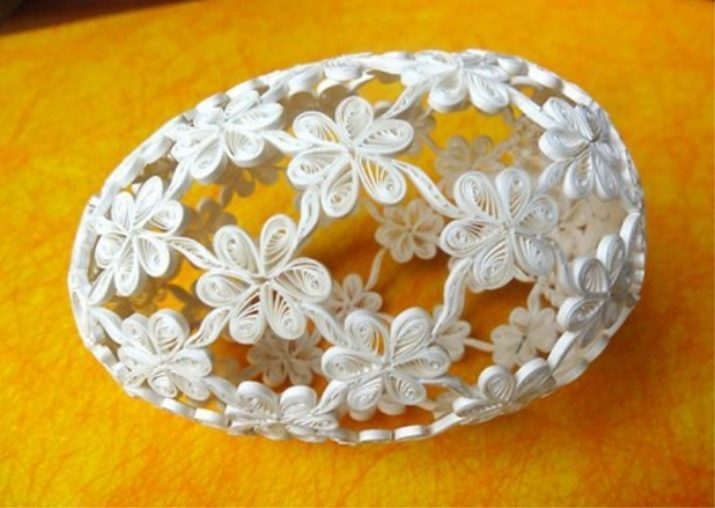
The sequence of steps is step by step. In a plastic egg, make a hole in the base of each part. We insert the button-nails with the plastic head inside.
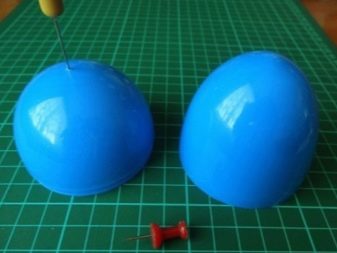
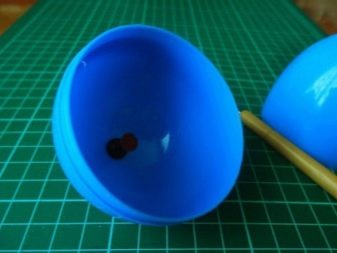
Between the points we stretch two elastic bands, divide the surface into 8 lobes. We draw with a marker and number on each half above and below. Tighten the film without assemblies and layers.
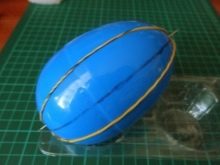
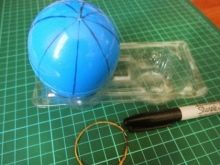
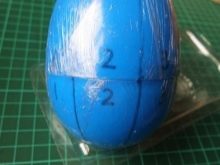
Cut the blanks. We will need different sizes: for large flowers on tops, for finishing the crown (rings and lace), for small flowers. You will need paper tape 4–5 mm thick, 30 cm long. We twist with a toothpick or tool. Only 8 pieces, pointed on one side. We fix the edge. We put a coil on top of the cone, fixing it with a pin, glue the petals to it and also pin it. Please note - the elements are carefully lubricated with glue at the joints, excess glue is removed. From the strips 15 cm long, we will produce 8 round parts - we stick them around the ornament.
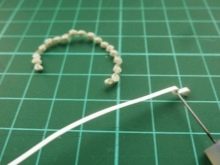
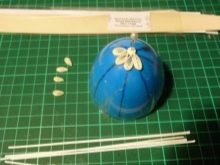
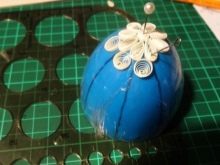
We wind a ribbon of paper along the entire length with an interval of 7 mm - should get an openwork braid. Apply glue and fix along the edge. Next, there will be five rows of 8 buds each. We twist the paper ribbons of 10 cm with a roll and form it in the form of a drop - 5 mm. We wind the leaves from the strips of 7 cm, weaken and give a curved shape. Flowers stick together on a smooth surface. After a few minutes, we add concavities with tweezers and stick the first row with the leaves up, pressing it with a pin.
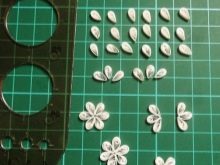
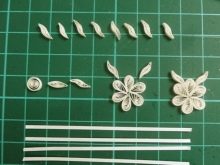
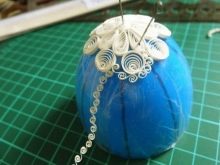
The next step is to make the leaves fall between the petals of the upper row - chess chain. In the first half, 3 flower rows will be removed. We’ll place the fourth one in the same way, but the diameter of the rings is getting a little bigger - so the crafts in the middle are wider. The leaves are also made longer, you can just fold the paper - this looped the way. We open the egg, remove the buttons.
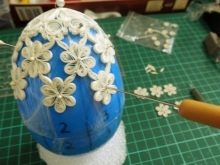
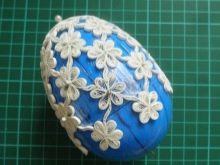
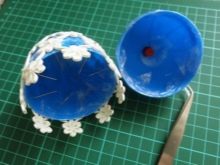
Getting to the second half. The top will be made in the same way, but we will issue an ornament from two rows of round parts. Each new area is pressed with needles. We connect two parts of the form. From 7.5 cm strips we twist curls, apply glue and fill the gaps between the circles on the second half. Then we apply curls of 30 cm ribbons. Docking row - here you need to be careful: the flowers are glued to the pattern on the top and fixed. The leaves are made in a looped way and try on: fits in size or not. Attach only to the colors that were applied last.
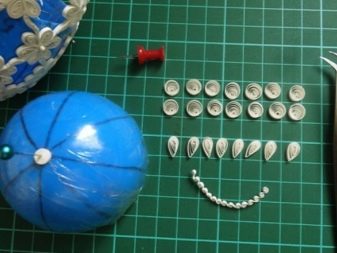
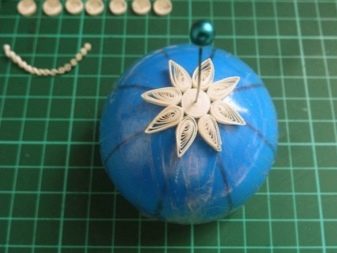

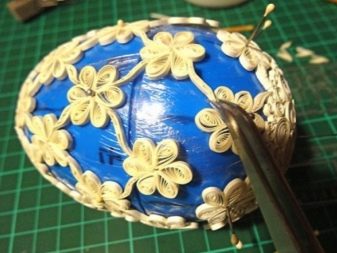
Let the work dry for about 12 hours, halves separate and, having removed pins, remove a basis. Stick a pin at the junction of 1 and 8 lobes in the upper and lower parts - so you will see how to evenly join the halves. Grease the leaves with glue and press them into the sinuses of the petals. The craft should dry well.
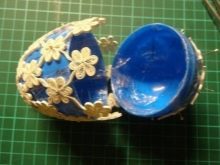
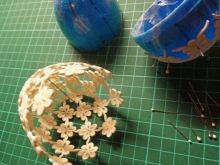

The egg can be varnished and decorated with beads.
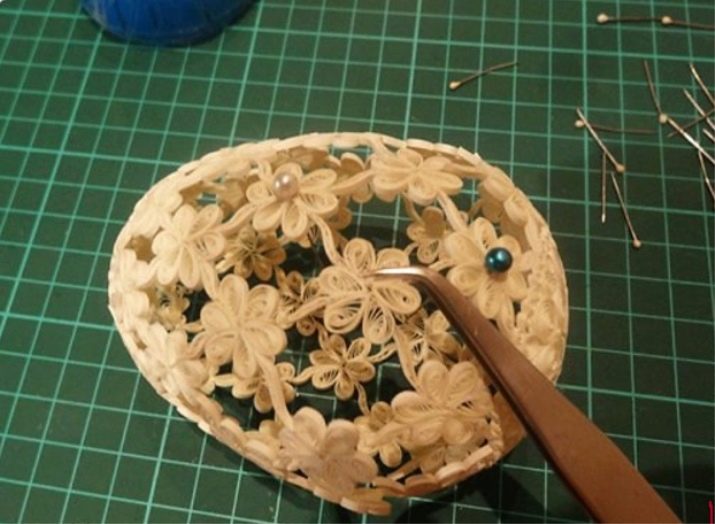
Beautiful examples
You can create many awesome presentations using the quilling technique. Such a souvenir looks unusual, will decorate the celebration and give the feeling of a real holiday.
Examples of awesome artwork for your inspiration:
- monochromatic design;
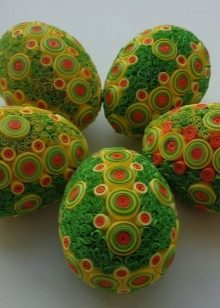
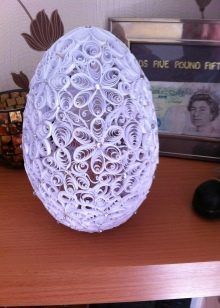
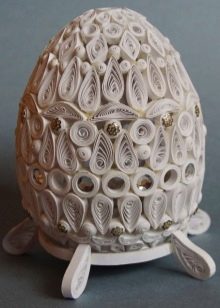
- with Easter symbols;
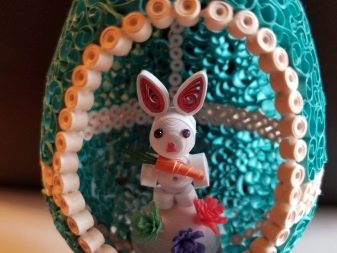
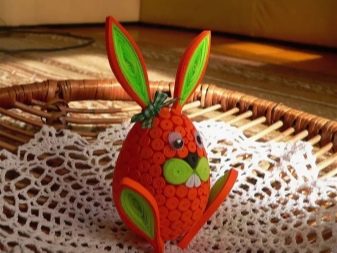
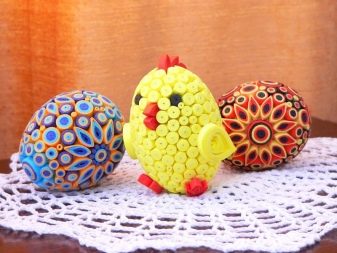
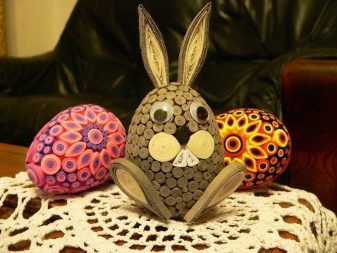
- in different colors;
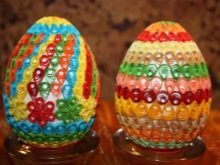
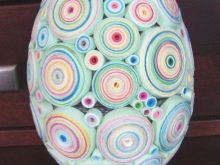
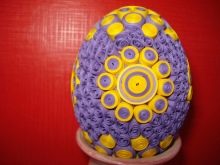
- flower ornaments;
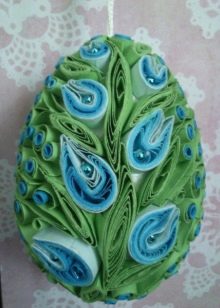
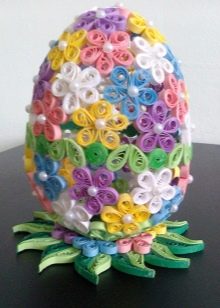
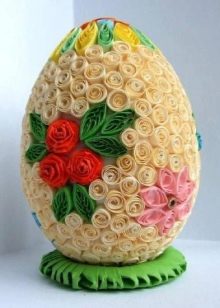
- with applique.
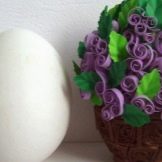
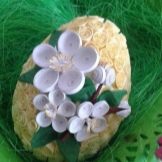
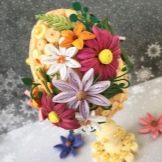
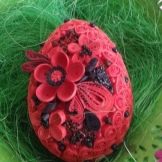
Another interesting master class on creating an Easter egg using the quilling technique, see the next video.
